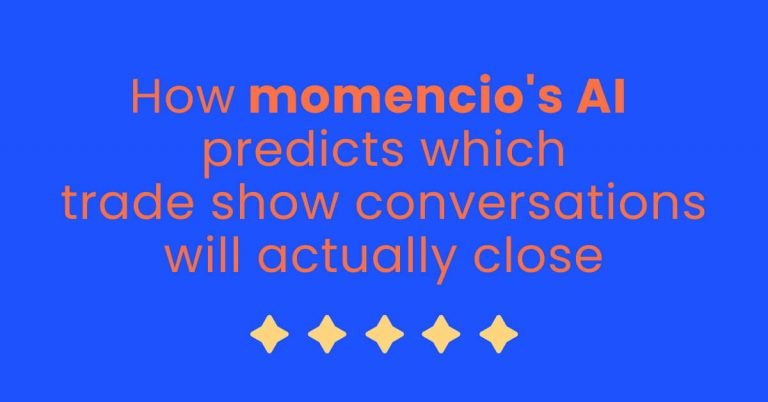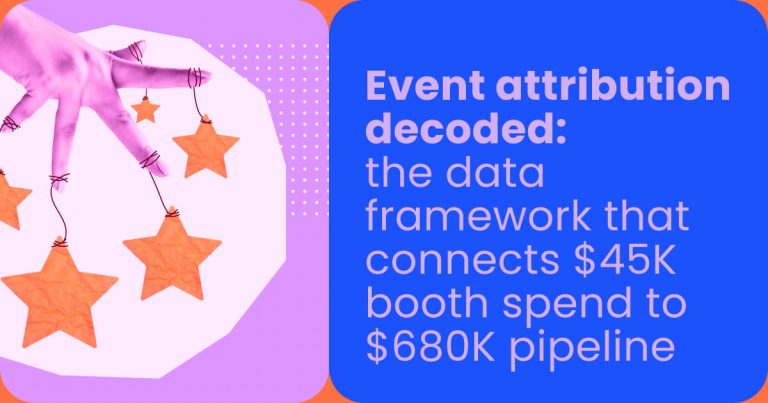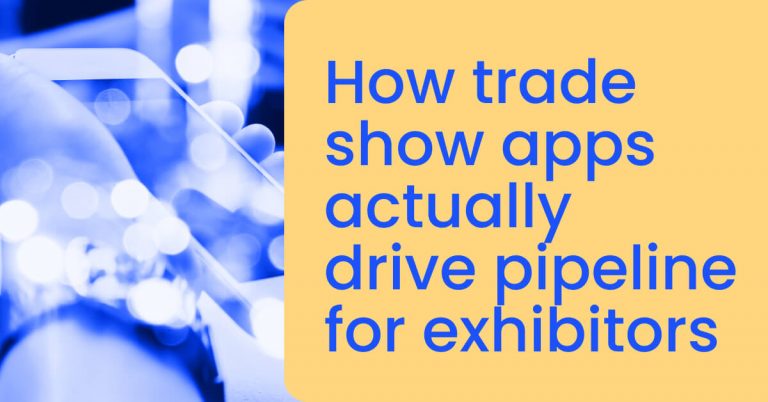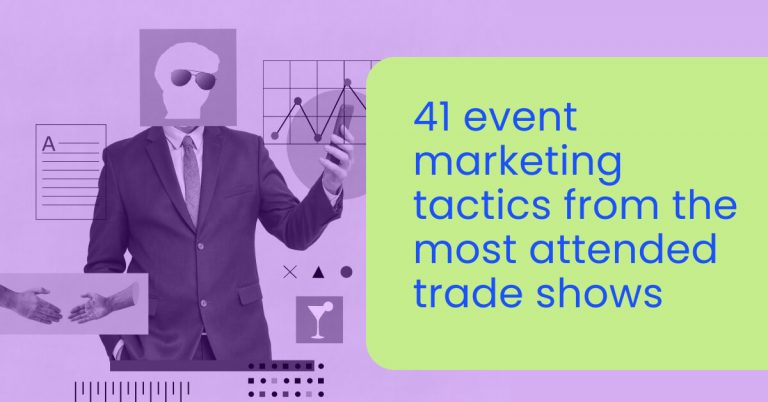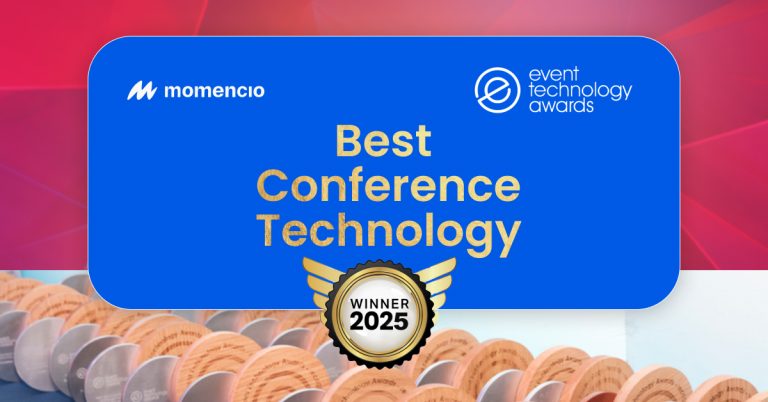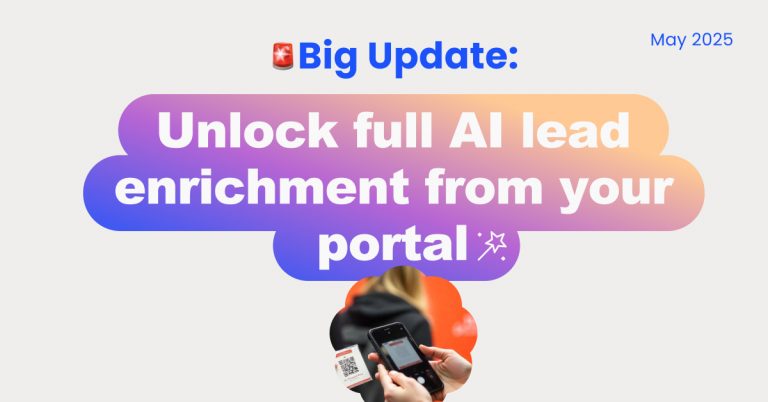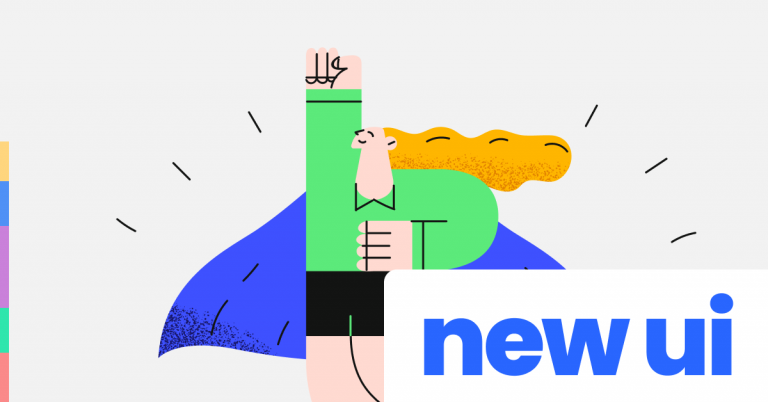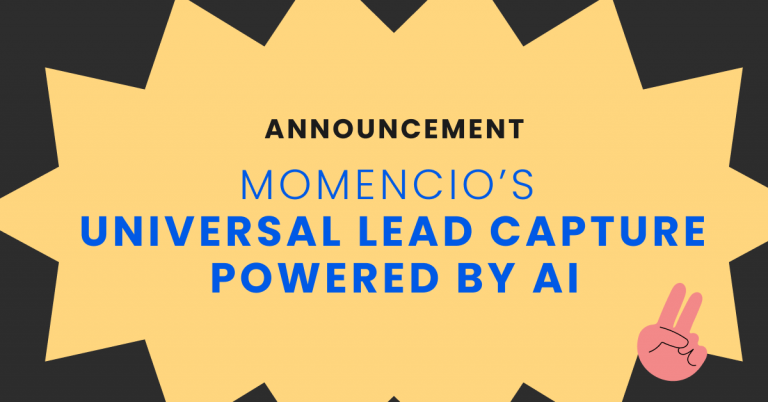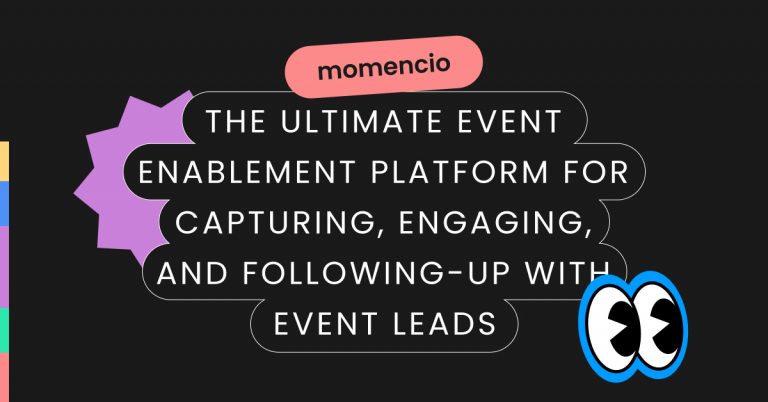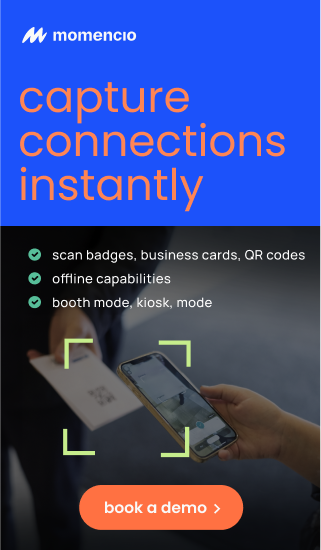Introduction
Trade show event marketing can be one of the most powerful tools in an organization’s event strategy, offering opportunities for lead generation, networking, and brand exposure. However, while they hold significant potential, trade shows also present unique challenges, particularly for marketing professionals aiming to measure ROI, capture high-quality leads, and maintain engagement long after the event ends.
For instance, 30% of trade show exhibitors report difficulties in measuring event ROI, and 43% struggle with integrating technology into their event strategy. Even more concerning is the fact that 79% of trade show leads are never followed up. These statistics highlight the need for actionable strategies that can help event marketers address these pain points and drive better outcomes.
In this article, we will explore five key challenges faced by marketers in trade show event marketing and provide solutions to overcome them. From balancing lead quality with quantity to enhancing booth engagement and integrating event technology, these insights will empower you to make the most out of your trade show participation and ultimately deliver tangible business results.
Challenge #1 – Balancing Lead Quality with Quantity
Trade show event marketing often centers around one primary goal: generating leads. However, the sheer volume of leads captured during events can be overwhelming, leading to an age-old challenge—balancing the quality of those leads with their quantity.
The Quantity Trap
At trade shows, it’s easy to focus on amassing as many leads as possible. After all, having a large contact list feels like a success. However, a significant portion of these leads may not align with your target audience, rendering them less valuable. If the event team’s primary focus is on collecting as many leads as possible, you risk overburdening the sales team with unqualified prospects. This can slow down the follow-up process and reduce conversion rates.
Statistically, approximately 65% of marketers believe that their top challenge is generating high-quality leads. This imbalance between lead quality and quantity can make it difficult for sales teams to effectively prioritize and nurture leads, leading to missed opportunities.
Solutions to Improve Lead Quality
- Pre-Event Targeting: Before attending a trade show, it’s crucial to define your target audience clearly. Who are your ideal customers? What pain points are they looking to address? By narrowing down your focus to prospects who fit this profile, you can better tailor your marketing efforts to attract high-quality leads.
Use tools like event apps and digital registration systems to identify the profiles of attendees who will be at the event. Many event platforms allow you to filter attendees based on their company size, industry, or job title—valuable information that can help you refine your lead capture strategy.
- Booth Engagement Tactics: Instead of passively waiting for attendees to visit your booth, employ engagement strategies that resonate with your target audience. Gamification and interactive experiences are excellent methods to engage attendees who are genuinely interested in your offerings. This filters out casual passersby and helps you focus on prospects more likely to convert.
For example, interactive demos or contests can attract higher-quality leads by offering deeper engagement opportunities. You can also leverage lead qualification quizzes during these engagements to assess a prospect’s needs quickly.
- Lead Scoring Systems: Not all leads are created equal. Implementing a lead scoring system can help prioritize follow-ups. With lead scoring, you assign points to each lead based on specific attributes like job title, engagement level, and expressed interest. This allows your sales team to focus on leads with the highest potential to convert, streamlining your follow-up efforts.
- Qualifying Conversations: Train your booth staff to ask qualifying questions during their initial interactions. For example, instead of simply collecting a business card, have them ask what challenges the attendee is facing, or what solutions they are currently considering. These insights can help sales teams determine whether to prioritize the lead post-event.
The Role of Technology
Modern event technology plays a crucial role in balancing lead quality and quantity. Tools that provide real-time lead scoring and integrated CRM capabilities are key to capturing not only large volumes of data but also high-quality leads. Platforms that allow for automated lead qualification—based on predefined criteria—can save your team valuable time and effort. By ensuring that unqualified leads are filtered out, your sales team can focus on nurturing high-potential prospects.
Challenge #2 – Measuring Trade Show Event ROI Effectively
Determining the ROI from trade show participation is a critical yet often complex task for event marketers. With significant resources allocated to trade shows, from booth design to marketing materials and staffing, proving the event’s value to key stakeholders can be a challenge.
The Complexity of Event ROI:
The challenge lies in the multi-layered nature of trade show ROI. It’s not just about how many leads you capture but about understanding how those leads move through the sales funnel, their eventual conversion into customers, and the long-term value they provide to the company.
For many event marketers, a lack of real-time analytics and comprehensive tracking systems is the primary obstacle to calculating an accurate ROI. 30% of exhibitors report difficulties in measuring event ROI, often due to fragmented or incomplete data.
Key Metrics to Track
- Lead-to-Customer Conversion Rate: This metric tracks the percentage of leads that eventually convert into paying customers. Understanding this conversion rate is essential for determining the financial impact of a trade show. To calculate this, track each lead through the sales pipeline using your CRM system.
- Cost per Lead (CPL): CPL helps assess the efficiency of your trade show investment by dividing the total cost of your participation by the number of leads generated. By calculating this, you can compare the cost-effectiveness of different events and determine which shows are providing the best value.
- Customer Lifetime Value (CLTV): CLTV refers to the total revenue a customer is expected to generate throughout their relationship with your company. By factoring in the lifetime value of customers acquired through trade shows, you can justify the initial event investment.
- Engagement Metrics: Measuring engagement during the event is another critical component. Metrics such as booth visits, interaction time, and content downloads give you a clearer picture of how much attention your brand received at the show. Tools like badge scanners, digital surveys, and real-time event analytics are essential for tracking this data.
Overcoming ROI Measurement Challenges
- Integrating Technology: One of the most effective ways to streamline ROI tracking is by integrating event technology platforms with your CRM system. These platforms can automatically capture leads, assign scores, and log interactions, feeding this data directly into your CRM for tracking and analysis.
- Predefined Goals and KPIs: Before attending a trade show, it’s crucial to set specific, measurable goals. Are you aiming to generate X number of qualified leads, achieve a certain number of booth engagements, or increase brand awareness? By setting clear KPIs, you can evaluate the event’s performance objectively.
- Post-Event Data Analysis: After the trade show, conducting a comprehensive post-event analysis is vital. This involves reviewing the lead data, calculating conversion rates, and assessing overall engagement. Post-event data should be presented to stakeholders in a way that highlights the business impact—whether that’s through increased sales, partnerships, or brand recognition.
By leveraging real-time analytics and setting up clear KPIs, you can overcome the challenge of event ROI measurement, providing tangible proof of your trade show’s success.
Challenge #3 – Post-Event Engagement and Lead Nurturing
One of the most significant challenges in trade show event marketing is post-event engagement and lead nurturing. While capturing leads during the event is crucial, the real work begins after the trade show ends. Without proper follow-up, the potential value of leads can diminish quickly, with 79% of trade show leads never being followed up. This lack of follow-up is one of the primary reasons why many trade show investments fail to yield significant returns.
Why Post-Event Engagement Fails
Post-event engagement is often undermined by several factors:
- Lead Overwhelm: Trade shows typically generate a large volume of leads, which can overwhelm sales and marketing teams, leading to delayed or inefficient follow-ups.
- Cold Leads: The longer a lead goes without follow-up, the colder it becomes. In fact, studies show that companies who follow up with leads within 48 hours are much more likely to convert those leads into customers.
- Lack of Personalization: Generic, impersonal follow-up emails fail to capture the attention of leads who have interacted with multiple brands during the trade show. Personalization is key to keeping leads engaged and pushing them down the sales funnel.
Strategies for Effective Post-Event Engagement
To overcome these challenges, a comprehensive post-event engagement strategy must be implemented. This involves a combination of timely, personalized communication and strategic lead nurturing tactics.
- Segment Leads for Personalized Follow-Up: Not all leads are at the same stage of the buying journey, nor do they have the same needs. After the event, segment your leads based on criteria such as engagement level, industry, or expressed interest. This allows you to tailor your follow-up messages to address the specific pain points or solutions that each lead is looking for.A well-segmented lead list makes it easier to send targeted content that resonates with the prospect. For example, if a lead expressed interest in a specific product, the follow-up should include detailed information or case studies about that product.
- Automated Follow-Up Campaigns: Leveraging marketing automation tools is critical for ensuring timely and consistent follow-ups. Automated email campaigns allow you to reach out to leads soon after the event, providing them with personalized content based on their interactions at the trade show.For instance, you can set up an email series that triggers based on the attendee’s booth activity or downloaded materials. This creates an ongoing conversation that keeps your brand top-of-mind as the lead evaluates their options.
- Content-Rich Microsites: Personalize the post-event experience by directing leads to microsites tailored specifically to their needs. These microsites can include product demos, case studies, brochures, and personalized videos that align with their interactions at the event. By offering a deeper, customized experience, you increase the chances of converting leads into customers.Personalization boosts engagement; research suggests that personalized content leads to an 82% increase in engagement when compared to generic content.
- Leverage CRM Integration: Seamless integration with your CRM system ensures that all interactions, conversations, and engagements from the event are logged and easily accessible to your sales team. This data is critical for follow-up because it allows the sales team to have personalized conversations with each lead, using the insights gathered at the trade show to build rapport and move the lead through the sales pipeline.
- Timing is Everything: Speed is critical in post-event engagement. A 48-hour follow-up window is considered ideal for reaching out to leads before they lose interest or move on to other solutions. Use automated reminders and workflows to ensure that your sales team engages with leads within this critical window.
Best Practices for Post-Event Lead Nurturing
- Personalized Outreach: Avoid the common mistake of sending generic, mass emails to your trade show leads. Instead, craft personalized messages that reference the conversations or activities they engaged in during the event.
- Multi-Touch Campaigns: Lead nurturing requires multiple touchpoints. Use a combination of emails, phone calls, and social media outreach to keep leads engaged over time. Each interaction should provide value, such as helpful resources or relevant insights that position your brand as a trusted partner.
- Offer a Post-Event Exclusive: Consider offering exclusive post-event promotions or resources to keep your leads engaged. This could be a limited-time discount, a downloadable guide, or an invitation to a webinar. The goal is to continue the conversation and add value beyond the trade show.
Technology for Seamless Post-Event Engagement
Event technology plays a crucial role in post-event engagement. Tools that automate follow-ups, segment leads, and sync data with your CRM can streamline the entire process. Platforms like momencio can capture all interactions from the event, automate personalized follow-up emails, and provide real-time insights into lead engagement.
Challenge #4 – Seamless Integration of Event Technology
In today’s event marketing landscape, technology plays an indispensable role in enhancing the trade show experience, from lead capture to real-time analytics. However, integrating multiple event technologies into a seamless, cohesive strategy remains a significant challenge for many event marketers. 43% of event professionals struggle with technology integration at trade shows.
The Problem with Fragmented Tools
When event marketers rely on multiple standalone tools for lead capture, CRM, marketing automation, and event analytics, it can lead to data silos. This fragmentation makes it difficult to gain a holistic view of attendee interactions and hinders effective follow-up. Additionally, managing multiple platforms can be time-consuming and inefficient for event teams.
The Solution: Unified Event Tech Platforms
To overcome this challenge, adopting a unified event tech platform that integrates seamlessly with your existing systems is critical. A unified platform offers several benefits:
- Real-Time Data Synchronization: Real-time data synchronization between your lead capture tools and CRM ensures that no valuable attendee information is lost. This real-time insight allows sales teams to track lead behavior and engagement throughout the trade show, making it easier to tailor follow-up conversations.
- Streamlined Lead Management: An integrated platform that combines lead capture, badge scanning, and CRM integration helps streamline the entire lead management process. With all data housed in one system, sales teams can easily access detailed insights on lead interactions, preferences, and behaviors during the event.
- Automation and AI Integration: Event platforms that leverage AI can help prioritize leads through automated lead scoring, ensuring that the hottest prospects receive immediate attention. AI-driven insights can also suggest the next best action, such as sending personalized content based on the attendee’s past behavior.
- In-Booth Engagement Analytics: Technology that tracks booth engagement in real time—such as heat mapping and interactive kiosks—can provide valuable insights into which areas of your booth attracted the most traffic and which content resonated the most with attendees. These insights can be used to refine your strategy for future events.
Benefits of Seamless Technology Integration
- Efficiency Gains: A unified platform reduces manual data entry, minimizes human error, and saves time for your event staff, allowing them to focus on high-value tasks such as building relationships with leads.
- Improved Data Accuracy: When data is captured and synced in real-time across platforms, it reduces the risk of incomplete or inaccurate data, ensuring that sales teams have all the information they need for effective follow-up.
- Enhanced Attendee Experience: A cohesive technology strategy enables a smoother, more engaging experience for attendees. From seamless registration to personalized booth interactions, an integrated platform ensures that attendees receive a consistent, professional experience from start to finish.
By investing in unified event technology, you can eliminate the fragmentation that hinders many trade show marketing efforts, ultimately driving better results from your events.
Challenge #5 – Maximizing Booth Engagement for Higher Conversions
Engaging trade show attendees at your booth is critical for converting prospects into leads and, ultimately, customers. However, trade show floors are crowded with competing booths, and drawing the attention of attendees is often challenging. Maximizing booth engagement requires more than just attractive visuals; it demands a well-thought-out strategy that resonates with your target audience and encourages meaningful interactions.
The Importance of Engagement
Booth engagement is one of the most important aspects of trade show success because it determines how many leads your team can capture and how well those leads are nurtured through the sales funnel. Research suggests that 68% of exhibitors believe that booth engagement directly impacts the number of qualified leads they generate. Without effective booth engagement strategies, even the most visually appealing booths may struggle to attract relevant attendees.
Booth Engagement Strategies for Success
- Interactive Experiences: One of the most effective ways to engage booth visitors is by offering interactive experiences that allow attendees to explore your product or service hands-on. Interactive demos, touchscreen kiosks, virtual reality (VR) experiences, or augmented reality (AR) applications can captivate attendees and make your booth stand out.
For example, if your company offers a software solution, allowing attendees to experience a live demo on-site can help them understand the product’s value. Gamification is another powerful tool that can increase booth traffic. Contests, challenges, or games where participants can win prizes not only draw attendees in but also create memorable experiences that keep your brand top-of-mind.
- Live Product Demonstrations: Hosting live demonstrations at your booth is an excellent way to showcase your products in action. A well-executed demo can engage audiences by highlighting the key benefits of your offering and addressing common pain points. Make sure your demonstrations are dynamic and interactive, allowing attendees to ask questions and get involved.
Demonstrations should be scheduled at specific intervals to create a sense of urgency and excitement. Attendees may schedule their time around your demo sessions, ensuring you have a steady flow of interested visitors.
- Personalized Interactions: Personalization is key to making meaningful connections with attendees. Booth staff should be trained to ask insightful questions and engage attendees based on their individual needs. Tailoring conversations to specific pain points and offering personalized solutions can help convert casual visitors into high-potential leads.
For example, if an attendee expresses interest in improving their company’s lead capture capabilities, booth staff can immediately offer a relevant solution and demonstrate how your product or service addresses that need.
- Content-Rich Collateral: Providing visitors with high-quality content that they can take with them helps extend your engagement beyond the event. This can include brochures, case studies, or industry reports that highlight your company’s expertise. Additionally, digital content such as whitepapers or eBooks, accessible via QR codes or microsites, can encourage further engagement post-event.
Tip: Ensure that the content is personalized to their needs. For instance, if a visitor engages with your booth on a specific product, provide them with content that delves deeper into that product’s features or use cases.
- Incorporating Technology: Leveraging real-time data and analytics tools can enhance your booth’s performance by helping you identify which aspects of your booth are most engaging. Tools like heat mapping can help track where attendees spend the most time, allowing you to optimize your booth layout for future events.
Additionally, badge scanning technology allows booth staff to capture leads quickly and efficiently. With digital badge scanning, the lead’s contact information is captured instantly and synced with your CRM, providing immediate insights into their interaction with your booth.
Measuring Booth Engagement Success
- Booth Traffic: One of the simplest metrics to track is the volume of traffic your booth attracts. This can be measured using foot traffic counters or by analyzing the number of badge scans performed. However, traffic alone doesn’t guarantee success. It’s also essential to assess the quality of interactions to ensure your booth is attracting the right audience.
- Engagement Duration: How long attendees spend at your booth is another key metric of engagement. Longer interactions usually indicate that attendees are more interested in your product or service. Tools like engagement analytics can help measure how much time visitors spend interacting with specific booth elements, such as demos or product displays.
- Lead-to-Sale Conversion Rate: Ultimately, the success of your booth engagement efforts will be reflected in your lead-to-sale conversion rate. After the event, track how many leads generated from your booth interactions eventually convert into customers. This can be done through your CRM system, where you can trace each lead’s journey from initial engagement to conversion.
How Ashland Created An Engaging and Memorable Booth Experience
At the ACS event, Ashland collaborated with momencio to transform their booth into an engaging hub using gamification. Visitors participated in a touchscreen game that allowed them to see Ashland’s products in an interactive way, boosting booth traffic and enhancing lead capture. The leaderboard and live display of the game attracted more attendees, creating an unforgettable experience. As a result, Ashland saw increased engagement, better lead generation, and stronger brand recall.
Conclusion
Successfully navigating the challenges of trade show event marketing requires a combination of strategic planning, technology integration, and a focus on engagement. From balancing lead quality with quantity to maximizing booth engagement, each step of the trade show journey presents opportunities to improve outcomes and drive business growth.
By leveraging the right tools—such as lead capture technology, real-time analytics, and automated follow-up systems—companies can streamline their event marketing efforts, making it easier to track performance and convert leads into sales. Additionally, by focusing on personalizing interactions and providing a memorable booth experience, you can differentiate your brand in a crowded marketplace and ensure that your trade show investment yields measurable results.
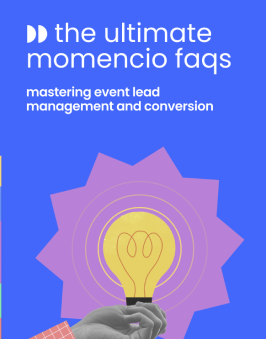
FAQs
- Why is booth engagement important at trade shows?
- Booth engagement is crucial because it determines how many qualified leads you capture and how effectively you can nurture those leads into sales. Engaged attendees are more likely to remember your brand and continue the conversation post-event.
- How do I measure the success of my trade show booth?
- What are the most common challenges in trade show event marketing?
- Common challenges include balancing lead quality with quantity, measuring event ROI, post-event follow-up, and integrating event technologies.
- How can I improve lead quality at trade shows?
- Focus on pre-event targeting, use lead scoring systems, engage attendees with personalized conversations, and ensure that your follow-up strategy is timely and relevant.
- What technologies can enhance my trade show success?
- Lead capture systems, CRM integration, real-time analytics, and badge scanning tools can all enhance your booth’s performance and streamline the lead management process.
Interesting Facts from Research
- 68% of exhibitors report that booth engagement directly impacts the number of qualified leads they generate.
- 79% of trade show leads are never followed up.
- Companies that follow up with leads within 48 hours are more likely to convert them into customers.
- 39% of event professionals face challenges with technology integration at trade shows.



